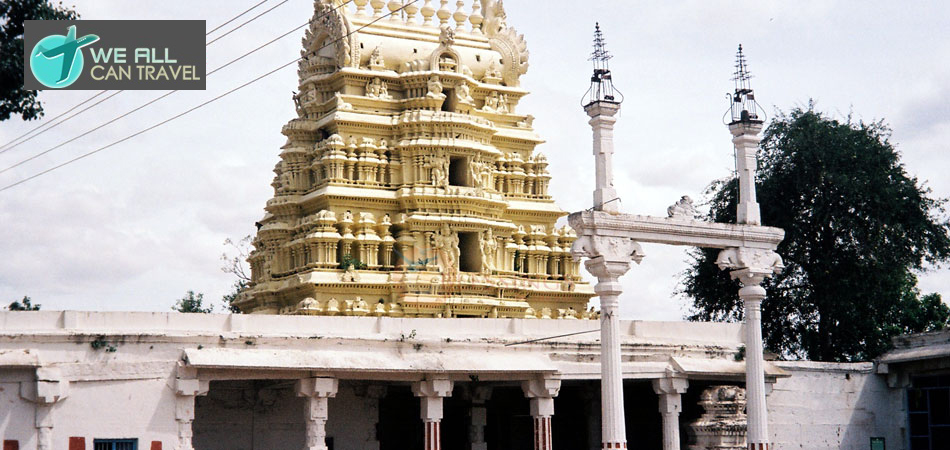Legend Of Parthasarthy Temple
Legend has it that the idol which is worshipped at Aranmula had originally been installed at Nilakkal, a few miles to the south of Sabarimala. The pandava brothers after crowning Parikshit as emperor of Bharat left on a pilgrimage visiting various holy Place. In Kerala each brother installed his own ishta devata on the banks of the Pampa and nearby places and offered worship. Among them the one at Nilakkal was that of Vishnu installed and worshipped by Arjuna. Nilakkal in those days was a forest inhabited by some thousand souls. In course of time it became uninhabitable due to scarcity of water and frequent attacks The inhabitants were thus forced to make an exodus and they carried their idol with them. The merciful Lord Himself in the guise of a Brahmchari wandered along the banks of the Pampa and showed them the place to live in. That was Aranmula. Since the people carried their idol in a raft made of six bamboo pieces the place acquired the name Aranmula (aaru being six and mula meaning bamboo). Some hold that the name may be a corruption of Arin Vilai, that is a land fringed by a river. The Mahabharata Episode The Lord at Aranmula is believed to represent a profound moment in the Mahabarata war. It was the ninth day of the battle. There were force combats. The Pandavas attacked Bhishma, the grandsire, who fought furiously and beat them back. The Pandava forces were thoroughly demoralised and were fleeing hither and thither. Krishna halted the chariot and said to Arjuna: Partha, you and your brothers were looking forward to this day, after thirteen years. Do not hesitate to kill your grandsire. Remember the duty of a soldier. But Arjuna did not like to kill his grandsire and the teachers whom he loved. He fought just to obey Krishna but his heart was not in the fight. Seeing this, Krishna jumped down in a rage from the chariot and taking up his discus, advanced towards the grandsire. Bhishma saw Vasudeva approaching and cried Hail O Lotus-eyed One Blessed am I to be separated from the body by you Come, come Arjuna also jumped down from the chariot and rushing forward, held Krishna and cried: Do not break your pledge. You have promised not to use weapons in this battle. This is my work. I shall not fail. Saying so Arjuna resumed the battle. While Krishna thus made Arjuna to fight, he took the weapon also to honour the word of Bhishma who had vowed that he would make Krishna take up weapon in the war. With Arjuna at the back and Bhishma in front Krishna shone with his discus in hand to bestow blessings on both his devotees. It is this Krishna we see in the image of Aranmula, pleased with the unsurpassed devotion of his staunch devotees and ready to do their bidding. This connotes that we should give up our attachment to the material body and surrender ourselves to the charioteer. He (the Lord) will take care of the chariot. He is the servant of the bhakta, his teacher. He is also his relative and friend. Entrust everything to him. All will be well.
There was a Nambudiri Brahmin or Bhattatiri in a house called Mangattillam in Kattoor (literally a village of forests) some 6 km. east of Aranmula. He was an ardent devotee of Krishna and every month on Thiruvonam asterism he would feed a Brahmin after washing hisfeet as per custom. Once in the month of Chingom (August September) he could not got a single Brahmin for the function. Bhattatiri was upset and did not know what to do. Suddenly a Brahmin appeared from nowhere and the much pleased householder conducted the ceremony happily.
 >> Agasteeshwara Temple
>> Agasteeshwara Temple >> Anantha Padmanabhaswami Temple
>> Anantha Padmanabhaswami Temple >> Ananthasana Temple
>> Ananthasana Temple >> Annapoorneshwari Temple
>> Annapoorneshwari Temple >> Arunachaleshwar Temple
>> Arunachaleshwar Temple